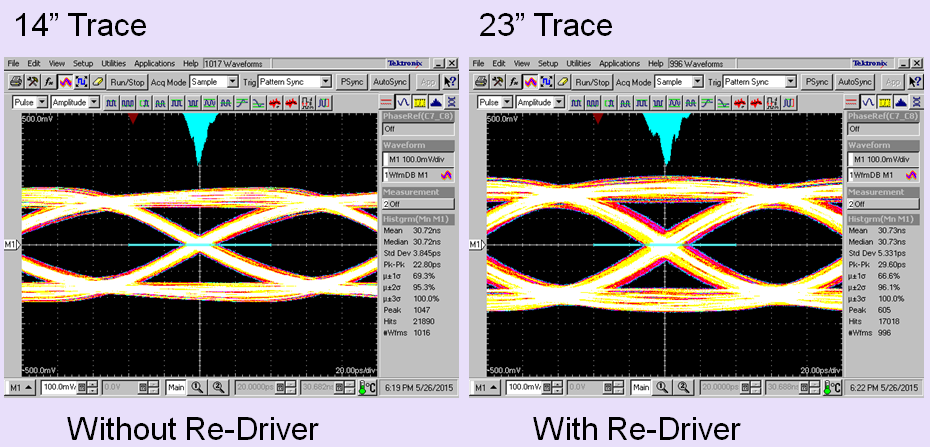To rephrase the question, what is the maximum pre-channel loss for a repeater so that it recovers the De-Emphasis (DE) from the TX completely?
For example, assume that the TX ASIC provides a data with 5 dB of DE and the channel loss from TX to repeater is 15 dB. With maximum 10 dB EQ of the repeater, will it be able to reproduce the same 5 dB DE at its output? The repeater DE is set to 0 and VOD/VID = 1. This ability to recover TX DE is essential in the link training in PCI, SAS protocols.
So, I just wanted to know how to allocate the loss budget.
Thanks in advance.



